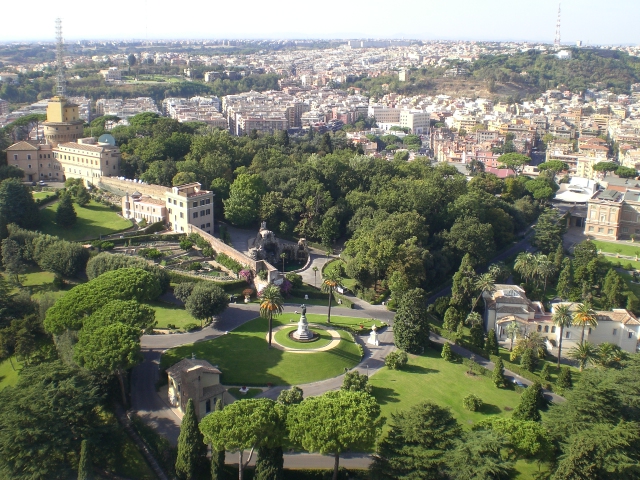On July 27, 2019, the Vatican’s newspaper L’Osservatore Romano described the “green” conversion of the Vatican Gardens as a “bio soul.” The project consists of the total elimination of chemical pesticides and fertilizers in the Gardens’ 15 hectares.
Rafael Tornini, Head of the Gardens and Environment Department of the Vatican’s Governorate, explained that the initiative, born in 2015, was reinforced in 2017, inspired by Pope Francis’ Encyclical Laudato Si’. Since then, 96 percent of the conversion has been carried out in the terrains urbanized in 1929.
Tornini said that the “principle that inspires the project is to strengthen the defenses of the flora instead of acting, in the first place, on its enemies. When a plant is healthy it’s able to defend itself from parasites, through better fertilization and optimum pruning and careful reforestation.” Some 220 trees have been replanted and it’s hoped to plant some 100 <more> in the coming year. A thousand new plants will replace those that are sick.
The plan includes the introduction of predatory insects — with aromatic plants that attract them — in the control of plagues. The gardeners are also giving priority to plants that have disappeared over the last years. In addition, a new watering installation will save 60 percent of the water in 2010.
Behind the famous Vatican Lourdes Grotto, large terracotta pots give witness of Vatican State’s history: each one bears a Pope’s Coat of Arms, from Pius XII to Francis, and contains plants planted under each pontificate.
Thanks to the bio project, the Vatican Gardens are becoming “a green micro-heart in the heart of the city, where the fauna and flora live in harmony and balance,” concluded the Vatican’s newspaper.

Vatican Gardens © Flickr / Óscar Spain
Ecological Conversion of the Vatican Gardens
Protection of the Flora and Fauna, Saving of Water


